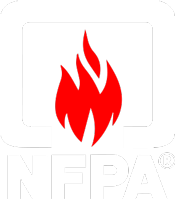Fire Safety
FIRE & SMOKE DAMPER INSTALLATION & INSPECTION
Fire, smoke, and combination fire/smoke dampers are crucial pieces of equipment used to reduce the spread of fire and smoke throughout a building. As with all fire protection and life safety equipment, fire and smoke dampers must be properly inspected, tested, and maintained to ensure that they will operate when needed.
FIRE SAFETY
(425 ILCS 13/) Fire and Smoke Damper Inspection Act.
NFPA Requirement
FIRE & SMOKE DAMPERS
The National Fire Protection Association (NFPA) and the International Building and Fire Codes require regular maintenance of fire and smoke dampers. Authorities Having Jurisdiction (AHJ’s) such as the Joint Commission, fire marshals and insurance risk auditors enforce these requirements.
NFPA also requires that fire and smoke damper repairs begin without delay.
- Inspection of fire dampers, smoke dampers and combination fire/smoke dampers 1 year after installation for all facilities. Every 4 years thereafter in non-healthcare facilities, every 6 years in hospitals.
- Locate and operate (i.e. actuate) all fire dampers and smoke dampers in your facility. Removing and resetting the fusible link to verify the damper fully closes.
- Manually activate electric smoke dampers and pneumatic smoke dampers. This is to ensure that the actuator is operable and to verify it fully closes.
FIRE TEST
Operational Testing
- Damper fully closes.
- There are no obstructions to the operation of the damper.
- There is full and unobstructed access to the damper.
- For dynamic dampers, the velocity in the duct is within the velocity rating of the damper.
- All indicating devices are working and report correctly.
- The fusible link (if equipped) is the correct temperature classification and rating.
Acceptance Testing
- The damper is not damaged or missing any parts.
- If actuated, dampers close fully upon disconnection of electrical power or air pressure.
- If actuated, dampers fully reopen when electrical power or air pressure is reapplied.
- If non-actuated, the damper closes upon removal of the fusible link and is manually reset to the full-open position.
Periodic Testing
- Confirm that the damper is in the full-open or full-closed position as required by the system design.
- Visually confirm the damper moved to the full-closed or full-open position when commanded.
- Visually confirm that the damper returns to the original operating position as required by the system design.
SMOKE TEST
Operational Tests
- Damper fully closes under both the normal HVAC airflow and non-airflow conditions.
- There are no obstructions to the operation of the damper.
- There is full and unobstructed access to the damper.
- All indicating devices are working and report correctly.
Acceptance Testing
- The damper is not damaged or missing any parts.
- Dampers close fully upon disconnection of electrical power or air pressure.
- Dampers fully reopen when electrical power or air pressure is reapplied.
Periodic Testing
- Confirm that the damper is in the full-open or full-closed position as required by the system design.
- Visually confirm the damper moved to the full-closed or full-open position when commanded.
- Visually confirm that the damper returns to the original operating position as required by the system design.
Fire Damper Commissioning

PER NFPA 3
Interconnected life safety systems (both active and passive fire protection systems), will undergo testing after the initial commissioning process. This ensures the fire safety system remains operational and that it works as intended in the event of a fire.
What is Commissioning?
The basic purpose of building commissioning is to provide a quality-based process with documented confirmation that building systems are planned, designed, installed, tested, operated, and maintained in compliance with the owner’s project requirements. Commissioning of existing systems may require the development of new functional criteria in order to address the owner’s current systems performance requirements. – The Building Commissioning Association (BCA)
PROCEDURES
- Detailed inventory of the location of every fire and smoke damper
- Damper functional checklist that includes:
- Model number of damper
- Damper size and type
- Type of barrier damper is located details regarding breakaway points, damper angles, and damper sleeve
- Fusible link details
- Details about actuator
- Operational details of every damper
- Other specific details related to project
- Digital pictures of every damper “open” and closed” to demonstrate damper’s operation and/or to show any deficiencies
Fire & Smoke Damper
REPAIR/INSTALLATION
Proper maintenance of fire, smoke, and fire/smoke dampers is crucial to ensure that they remain operational. If a damper is found to not be operational, repairs need to be completed without delay and a periodic test must be completed after the repair is completed to ensure the damper’s operation. All exposed moving parts of the damper need to be lubricated as required by the manufacturer and any reports of an abrupt change in airflow or noise from a duct system needs to be investigated to ensure that it is not related to the damper operation.
Proper inspection, testing, and maintenance of fire, smoke, and fire/smoke dampers ensure they are installed and operating properly in the event of an emergency.
The NFPA states that should a damper be found deficient during routine maintenance and inspection, repair should begin as soon as possible. Per requirements of NFPA 80 and NFPA 105
- Smoke damper and combination fire/smoke damper actuator replacement
- Fire damper installation
- Smoke damper installation
- Combination fire/smoke damper installation
- Damper repairs
- Adjustments to damper linkage
- Servicing internal components to allow closure
- Repairs to damper tracks that are binding and prohibiting closure
- Repairing broken tabs on damper

